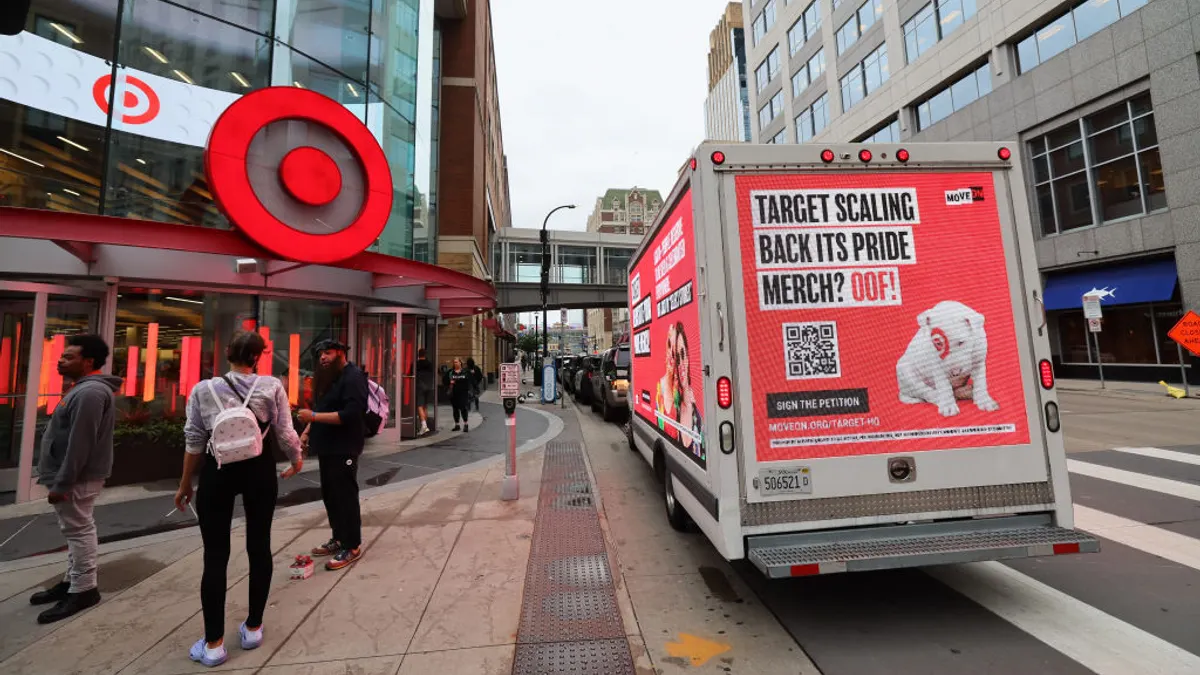Dive Brief:
-
American Apparel's marketing team is working to thread one of the most difficult needles in marketing — renouncing the brand's controversial image without losing its still-popular allure. Sabina Weber, American Apparel head of brand marketing, recently told Adweek, "We don't believe in covering up...Women feel so conflicted about being sexual right now, but we're taking a position to still be sexy, unapologetically so, but from an empowered female perspective."
-
Under new owner Gildan, the brand has put in place the first all-female executive team and with it a few major changes. The marketing, like Charney's, includes "real" people (not just models) to represent a diversity of ethnicities and body types, and the team has taken care to ensure that those pictured are well over 18 years old, (which Charney also insisted was true when he led marketing there,) according to Adweek's report.
-
Weber also told Adweek that their practice has shifted to ensure that men and women are shot in similar poses with the same amount of clothing. Founder Dov Charney put his stamp on the brand's aesthetic early on and still maintains that the notoriety his images received only helped American Apparel reach worldwide popularity.
Dive Insight:
A glance through American Apparel's current imagery on its Instagram account shows the brand hasn't exactly shied away from the crotch shot or the come-hither look — and, according to Adweek's account, that's not really the aim.
As that report notes, there's precious little appetite for potentially degrading associations of any kind in the current cultural moment — at a time when women have found the courage to come forward with stories of demeaning sexual come-ons and harassment that in many cases had destroyed, halted or impeded their careers. As American Apparel refocuses branding efforts, executives are shifting the message of sexuality to "an empowered female perspective," Weber told Adweek.
And that doesn't mean throwing Charney's playbook out entirely. The candid, caught-in-the-moment images that Charney favored for years have become a routine part of social media, in the form of selfies. People of all ages are posting pictures of themselves, often in the very suggestive ways that for years garnered American Apparel criticism. If American Apparel abandons its former vibe, it could miss out on some natural synergies. In fact, the brand these days ask customers to submit selfies to be featured on American Apparel's social media pages.
The informal quality and the profusion of American Apparel's imagery, along with the salaciousness, are hallmarks of the Charney-led American Apparel approach, and all are evident in the current campaign, even with him gone. In some ways, the new American Apparel still looks a lot like the old American Apparel.
"We produced an enormous amount of variety — we were producing in some cases 30 ads a week in different markets. I kept shooting till the end. I was shooting days before I was fired," Charney told Retail Dive last year. "We were doing selfies before the age of selfies. I was buying cameras for women and said ‘Shoot yourself' because what a selfie is, is a real moment, it makes the person look larger than life."
In the end, it's unclear how far American Apparel can separate sexy imagery from its advertising, either, without losing a major element of its sales pitch. Charney says that he doubts that it — or any apparel brand, including his new venture, Los Angeles Apparel — can or ever really will, despite the changes in the wider culture.
In wide-ranging discussions with Retail Dive last year, Charney wouldn't say much about his marketing approach for his new brand. "I'm not saying that it will have the same high temperature, but it will be authentic," he said. "The workers are part of it, the culture of Los Angeles is part of it. But human sexuality is part of the reason that people wear clothes. You're not going to escape our sexuality from a narrative about a clothing company."













